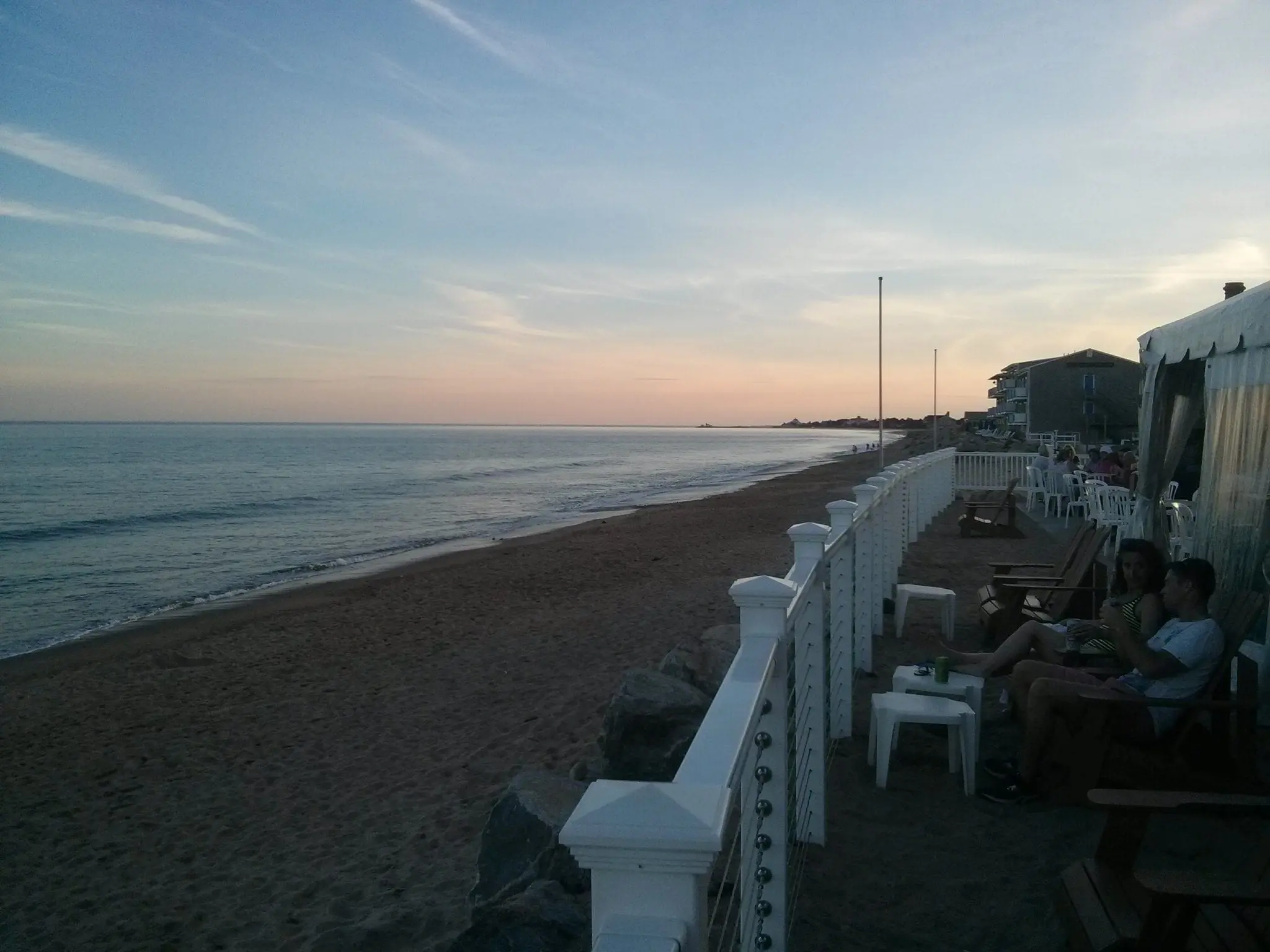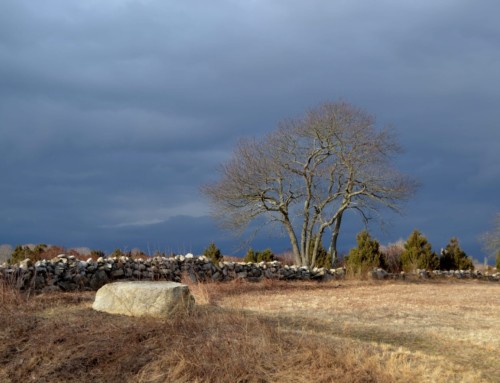Westerly is blessed with almost 10 miles of oceanfront and its beaches are renowned countrywide. In colonial times the Watch Hill and Weekapaug sections were settled in the early 1700s with farmers and fishermen. The stretch between Watch Hill and Weekapaug is now the Misquamicut Fire District which was incorporated in 1915. It is comprised of a thin strip of barrier beach between Winnapaug Pond and the Atlantic Ocean. Early settlers considered the beach worthless except for gathering seaweed to use as fertilizer and that is why it was not developed for almost another 200 years.
After the Civil War and with the prosperity created by the Industrial Revolution a leisure class began to look at the beach for recreational purposes. In the late 1800s, the beach started to become popular and a large tent city existed in the summer where Benson Avenue is today. The only building on the beach then was Captain James Thompson’s small fish house. Court Bliven and his family had been staying in tents and in 1894 purchased a lot and built the first cottage called the Pioneer. While inspecting the construction of the cottage Court’s wife Trudy was impressed by the view and exclaimed, “What a pleasant view.” Therefore the area was named Pleasant View Beach.
Court Bliven was an interesting man and in 1885 built the Bliven Opera House in downtown Westerly at 100 Main Street where Avies Ski / Sport is today. It was the first major theatre in Westerly and had a large 37 by 56-foot stage and a seating capacity of 1200 people. It presented theatrical productions, Vaudeville shows and later motion pictures. The theatre burned down in a fire in 1925.
In 1895 Bliven built a second cottage in Misquamicut on the beach. He had it enlarged in 1905 and it became the Wigwam Hotel. Misquamicut grew into a resort almost overnight with Bliven promoting it. In 1896 he threw a clambake for 213 friends and prospective buyers. Guests arrived by horse-drawn carriages.
A real estate boom began with oceanfront lots 50 by 150 feet selling for $50 and by 1911 over 150 cottages had been constructed. By 1920 the fledgling resort was becoming well known and had four major hotels and a post office. In 1928 the US Postal Service changed the name from Pleasant View Beach to Misquamicut. The name is of Native American origin meaning “red fish,” a reference to the Atlantic salmon that used to thrive in the Pawcatuck River.
Misquamicut, being a barrier beach and low lying, is susceptible to coastal storms particularly hurricanes. Three of the worst hurricanes in the twentieth century were the great 1938 hurricane, the 1944 storm and hurricane Carol in 1954. In the 38 hurricane whole communities were wiped off the map and the devastation was truly apocalyptic. In Misquamicut alone there were 41 lives lost and 369 cottages destroyed.
By 1954 when hurricane Carol struck Misquamicut most of the cottages had been rebuilt for the third time. Carol although not as powerful a storm as the hurricane of 38 was still category 3 and had a 14-foot storm surge. The storm destroyed more than 300 cottages in Misquamicut.
This time the Governor of Rhode Island Dennis Roberts had had enough and condemned a half-mile long section of beach which created the Misquamicut State Beach in 1959.
Some experts say Misquamicut is overdue for a major hurricane. Recent Super Storm Sandy pushed up 4 feet of sand over Atlantic Avenue and destroyed many homes and businesses. It was only a category 1 storm when it came ashore and even though new houses in Misquamicut are being built to much stricter building codes the area is still vulnerable to major storms.
In the meantime, it’s almost spring and the beach will soon beckon swimmers and sun-worshippers for another season. More than 120 years have passed since Court and Trudy built the first cottage on the beach and since then Misquamicut has developed into a first-class residential and resort community. If Trudy could see it today I wonder if she would say “What a pleasant view.”








